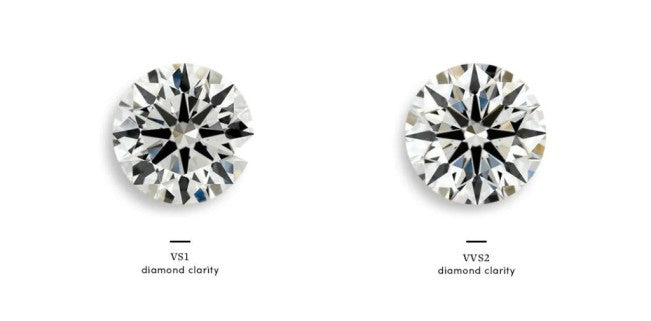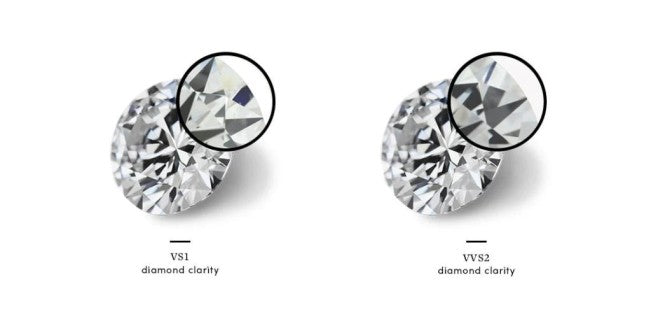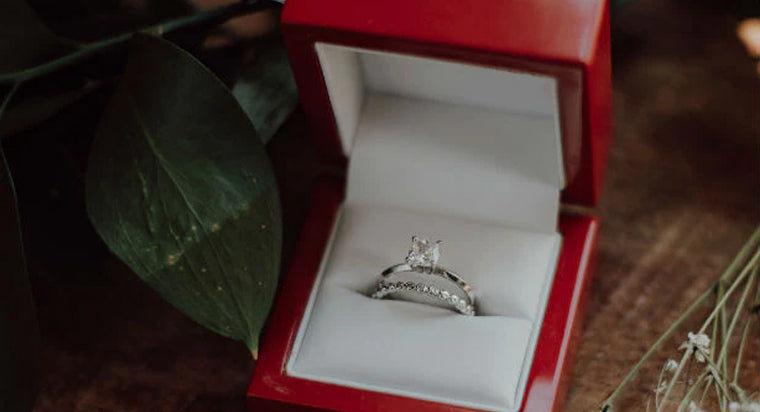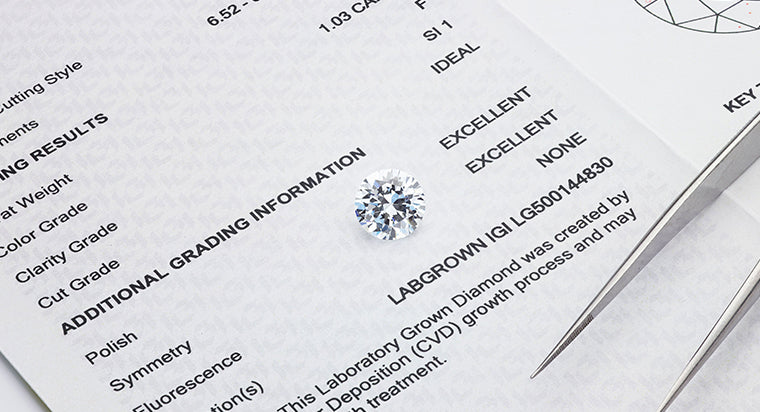What You Need to Know When Debating VS1 vs VVS2 For Your Diamond

Maximizing your engagement ring budget is a careful balancing act — one that involves making a lot of decisions on what you must have when it comes to the 4 C's of diamonds (and which ones you can dial back a bit).
One way to make room in your budget for a bigger carat or more expensive diamond cut is to sacrifice a bit of clarity.
At With Clarity, we follow the Gemological Institute of America's clarity scale that divides diamonds (natural or lab) up into 11 different grades, ranging from Flawless to Included. Most diamonds fit somewhere in the Very, Very Slightly Included and Very Slightly Included Scale.
Even though VS1 and VVS2 diamonds are in two different grades, they're technically only one step apart. So, which should you go with? It all depends on your must-haves — and your nice-to-haves.
TABLE OF CONTENTS
VS1 vs VVS2: Differences in Clarity
Here's the good news: When it comes to VS1 vs VV2 diamonds, the differences between the two are very small.
Diamonds that are graded as VVS2 (part of that Very, Very Slight Included range) have very minor flaws (called inclusions) that are extremely small, but are slightly more visible under magnification than VVS1. That said, these inclusions are almost impossible to see, even under 10x magnification. The most common inclusions you'll see in VVS2 diamonds include cloud, pinpoint, feather and natural.

VS1 diamonds (part of the Very Slightly Included range), on the other hand, do have inclusions that can be seen under magnification, but they're typically very minor and don't have much effect on diamond sparkle (if any at all). The most common VS1 inclusions include cloud, feather, needle, crystal and indented natural.
VS1 vs VVS2: Differences in Price
There aren't many differences between VS1 and VVS2 diamonds, but you'll pay different prices depending on which clarity grade you decide on.
Diamonds in the VVS2 range are considered the best value of the higher clarities — and it won't compromise your diamond's brilliance. VS1 grade diamonds, on the other hand, will be less expensive than the VVS2 stones. That said, the actual amount you'll pay for your diamond will depend on other factors, including color, cut and diamond weight.
VS1 vs VVS2: The Bottom Line
You really can't go wrong when deciding between VS1 vs VVS2 diamonds, and it's always important to consider each stone independently when shopping for a diamond anyway.

Both clarity grades will get you a beautifully eye clean stone — the differences can only be seen under magnification (and you probably won't be looking at your diamond that way anyway). So it really comes down to priorities: do you want to pay for something you cannot see? Is clarity your top priority?
You don't have to answer that alone. Our expert gemologists can also help you decide since you'll be evaluating on a stone by stone basis. Just answer a few questions and one of our experts will be in touch to help you pick the right clarity — and the right look — for your diamond engagement ring.







